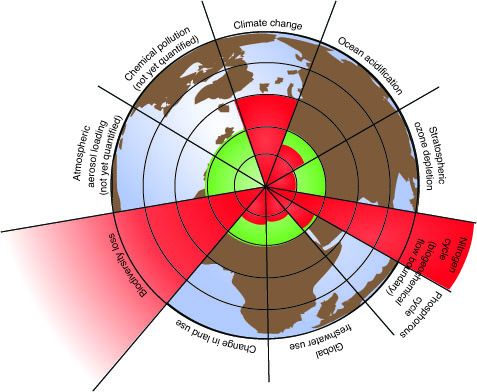In 2010, the Stockholm Resilience Centre revealed ‘nine biological and environmental boundaries’, that once crossed, would spell disaster for the human race. These include the loss of fresh water and widespread chemical pollution. By observing the change in pollutant emissions, the researchers are able to monitor and access the current health of the planet.
According to the Stockholm researchers, the human race has already crossed three of these boundaries, as can be evidenced by the excess CO2 emissions in the atmosphere, rapid rates of species loss, and excessive nitrogen concentrations in our rivers and oceans. The erosion of forestland is also nearing the limit set out by the Stockholm Resilience Centre. This inhibits the “planet’s ability to absorb some of that carbon dioxide and to produce water vapor, crucial to plant life”, as well as the Earth’s ability for climatic self-adjustment based on the absorption and reflection of photo-thermal energy. We can no longer abuse the environment for economic growth; there must be consequences for being able to capitalize on the resources that we are all entitled to as residents of the planet. The Stockholm Resilience Centre concludes that responsibility for fostering change in current emission patterns lies with global heads of state.
January 2016 anticipates the completion of the U.N. Sustainable Development Goals, which were created as a means to guide nations in crafting policies for environmental sustainability. So far, the agreement has acted as a guideline for governments setting out to develop and shape their foreign policies in terms of the provision of aid to end poverty overseas, and has been utilized by NGOs to hold governments and corporations accountable for their environmental infractions.
Perhaps the UNDP must attach a “punishment clause” to the Millenium Development Goals in order to ensure its efficacy. By encouraging local adherence to UNDP objectives, and innovation in attaining the goals, local communities are likely to take ownership of their part in affecting the global environment. Financial retribution alone is sure to prove ineffective, if not harmful to local communities, as it does not help to promote innovative solutions to the economy vs. environment dichotomy, while hurting local stakeholders in the process, at least in the short term.




